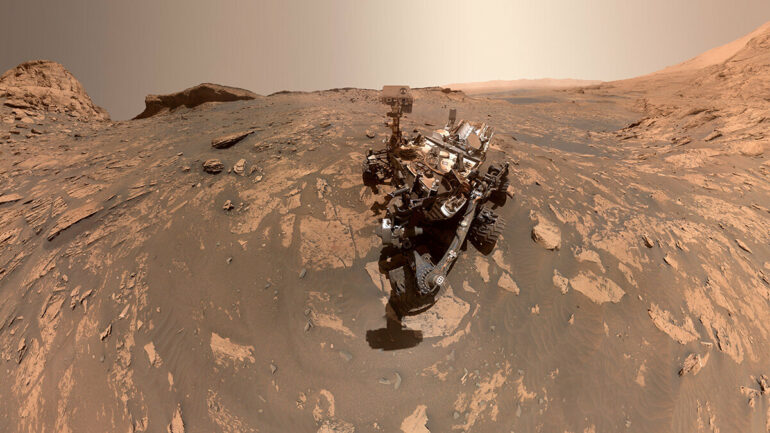NASA’s Curiosity rover landed on Mars in August 2012, and its investigations revealed that Mars was once a potentially habitable planet. One of Curiosity’s most exciting observations has been periodic, unusually high abundances of methane in Mars’s atmosphere. Over the past seven years, Curiosity has established a background signal of methane of about 0.41 part per billion by volume (ppbv), and these periodic spikes can increase atmospheric methane to as much as 21 ppbv.
Luo et al. note that these methane spikes could “have profound implications for geology and astrobiology.” On Earth, almost all methane emissions have biological origins, from cow flatulence to the decay of plant material. On Mars, methane could be a potential biosignature, a chemical trace produced by life. However first, scientists must rule out methane’s nonbiological origins.
To investigate where the methane emissions could originate, the researchers employed a method called “back-trajectory analysis.” This method involves using models based on what scientists know about Mars’s atmosphere to track a parcel of air backward in time from the moment of its measurement. The researchers studied all seven methane spike events that have been detected so far and used an existing global climate model of Mars to simulate how wind could transport methane traveled around the planet.
By simulating the backward trajectory of each spike of methane on the basis of wind patterns from various seasons and times of day, the authors found that the spikes most likely originated from the same general area: the northwestern part of Gale crater, a large impact crater that scientists think once held liquid water, where Curiosity is currently exploring.
However, Curiosity’s detections of methane on Mars have been called into question by experts. For instance, the European-Russian ExoMars Trace Gas Orbiter (TGO), which has been investigating the Red Planet from orbit since late 2016, hasn’t detected the same abundance of methane in Mars’s atmosphere that Curiosity has detected from the surface. The authors note there could be a geological mechanism that quickly sequesters methane from the atmosphere or an atmospheric mechanism trapping it near the surface. Further research needs to be done to confirm that this is where the methane originates, the authors note, and Curiosity should continue making measurements of ambient methane abundance to capture more methane spike events.
More information:
Y. Luo et al, Mars Methane Sources in Northwestern Gale Crater Inferred From Back Trajectory Modeling, Earth and Space Science (2021). DOI: 10.1029/2021EA001915
Provided by
Eos
Citation:
Scientists turn back time to track methane emissions on Mars (2022, January 14)



